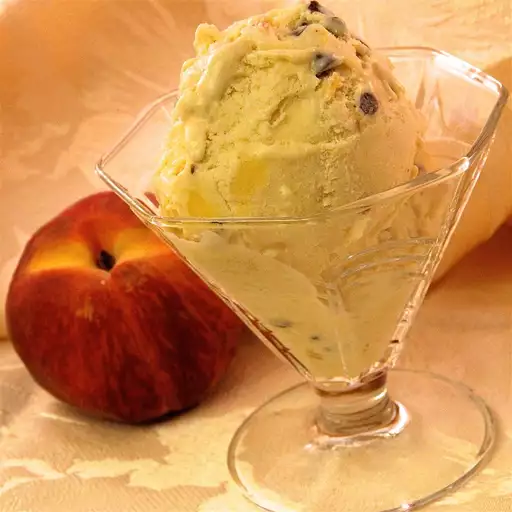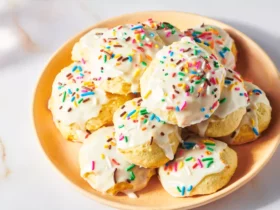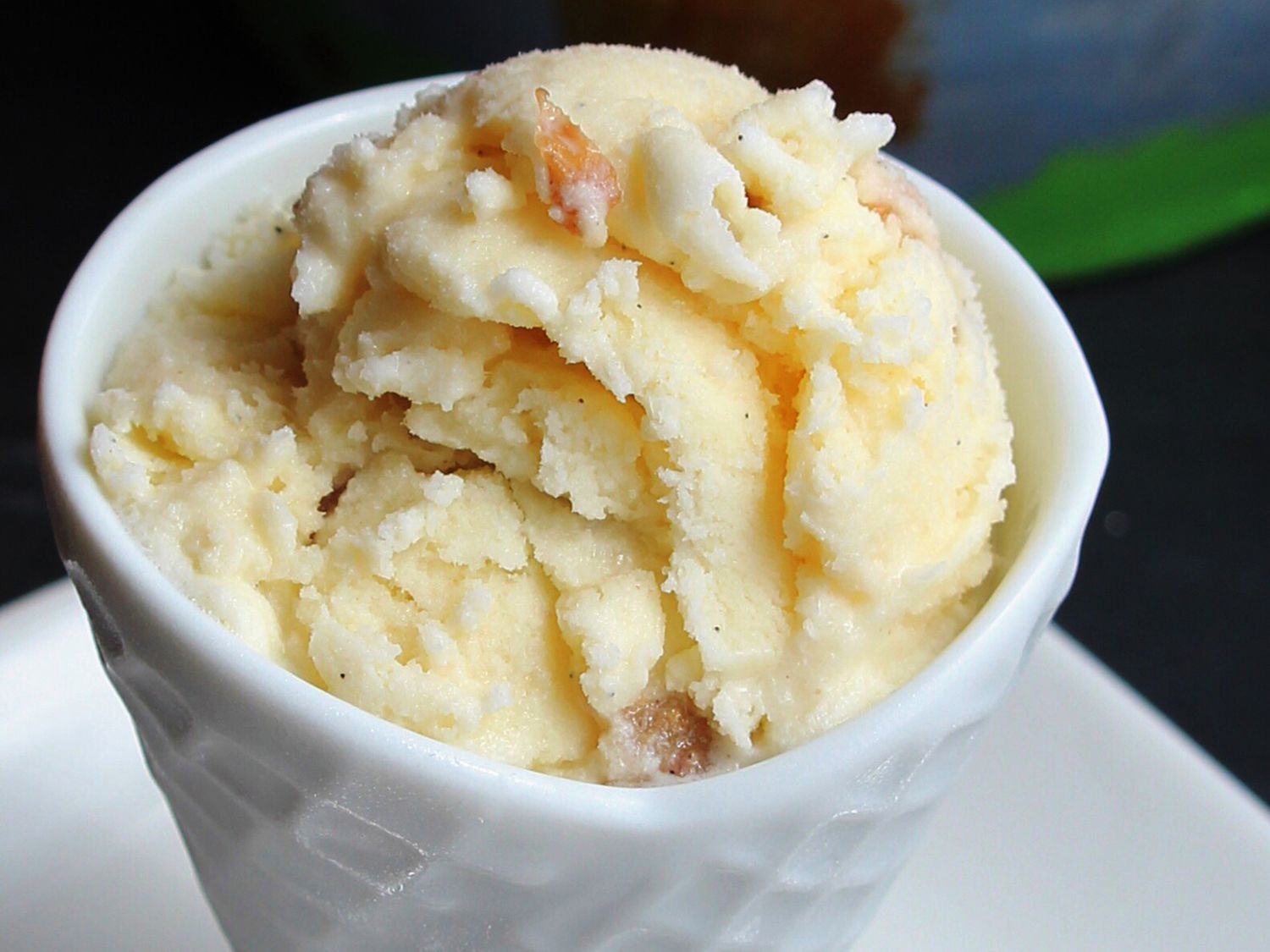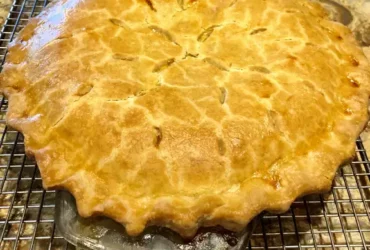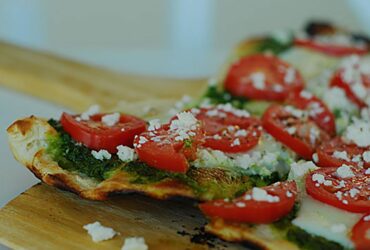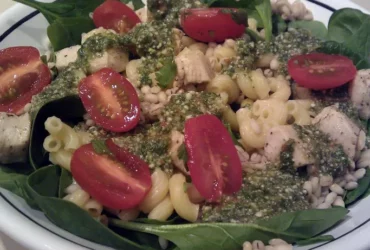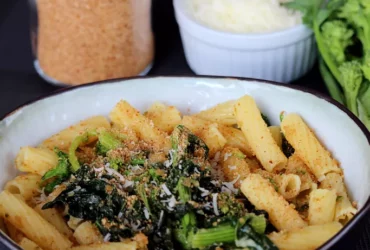Gelato Ingredients
Selecting High-Quality Ingredients
Gelato ingredients play a crucial role in determining the quality and flavor of the final product. Selecting high-quality ingredients is essential to create a delicious and authentic Italian-style gelato.
Here are some key factors to consider when selecting gelato ingredients:
Dairy or Non-Dairy Bases:
- Milk, cream, and yogurt are traditional dairy bases used in gelato. The quality of the milk is crucial as it affects the flavor and texture.
- For non-dairy options, choose high-quality coconut milk, almond milk, or cashew milk that has a neutral flavor.
Fruits and Fruit Purees:
- Choose fresh, seasonal fruits with high sugar content, such as strawberries, raspberries, or mangoes.
- Avoid using overripe or unripe fruits, as they can impart unpleasant flavors and textures.
Nuts and Seeds:
- Select high-quality nuts such as hazelnuts, pistachios, or almonds that have a good balance of flavor and texture.
- Choose seeds like sesame or poppy for added nutrition and unique flavors.
Cocoa and Chocolate:
- Select high-quality cocoa powder or dark chocolate with a high cocoa content (at least 70%) for authentic flavor.
- Avoid using artificial flavorings or sweeteners that can compromise the taste and quality of the gelato.
Sweeteners:
- Choose natural sweeteners like sugar, honey, or maple syrup in moderation to balance the flavors.
- Avoid using high-fructose corn syrup or other artificial sweeteners that can affect the texture and taste of the gelato.
Flavorings and Spices:
- Select high-quality flavorings like vanilla extract or almond extract in moderation to enhance the flavors without overpowering them.
- Avoid using artificial flavorings that can compromise the taste and quality of the gelato.
Other Ingredients:
- Add-ins like chopped nuts, chocolate chips, or fruit preserves can enhance the texture and flavor of the gelato. Choose high-quality options that complement the base flavors.
- Avoid using excessive additives or preservatives that can affect the quality and shelf life of the gelato.
Gelato is an Italian-style dessert that originated from a combination of cream, sugar, and flavorings. It is typically denser and lower in fat compared to ice cream.
The ingredients used in gelato recipes can vary greatly depending on the type of flavor being created and the desired texture. Here are some common ingredients found in gelato recipes:
- Cream
- Sugar
- Flavorings (such as vanilla, chocolate, or fruit purees)
- Egg yolks
- Milk (whole, skim, or a combination of both)
- Natural sweeteners (like honey or maple syrup)
- Thickeners (such as cornstarch or guar gum)
- Fat (butter or oil) in small quantities
- Stabilizers (such as carrageenan or pectin)
The choice of ingredients and their proportions can affect the final texture, flavor, and appearance of the gelato. For example:
- A higher sugar content will result in a sweeter gelato, while a lower sugar content will produce a more subtle flavor.
- The type and amount of fat used can influence the creaminess and smoothness of the gelato.
- Adding egg yolks to the mixture will enrich the flavor and provide emulsification properties.
In addition to these standard ingredients, some gelato recipes may incorporate additional components such as:
- Cocoa powder or melted chocolate for chocolate-flavored gelato
- Strawberry puree or other fruit purees for fruit-based gelato
- Nuts (such as hazelnuts or pistachios) for added texture and flavor
- Espresso powder for a coffee-flavored gelato
The art of making gelato involves carefully balancing the proportions of these ingredients to create a smooth, creamy dessert with a rich and intense flavor. By experimenting with different combinations of ingredients and techniques, you can develop your own unique gelato recipes.
Milk: Whole milk, lowfat milk or nonfat milk from reputable dairy sources such as the USDA.
Milk is a fundamental ingredient in gelato, providing creaminess and richness to this Italian-style frozen dessert. For gelato recipes, you can use whole milk, low-fat milk, or nonfat milk from reputable dairy sources.
Types of Milk Used in Gelato
- Whole Milk: Whole milk is made up of 3.5% fat content and is often preferred for gelato recipes as it gives a richer, creamier texture. It’s an excellent choice if you want to create a traditional Italian-style gelato.
- Low-Fat Milk: Low-fat milk has a lower fat content (around 1-2%), making it a popular option for those watching their calorie intake. It still provides a creamy texture without the extra calories of whole milk.
- Nonfat Milk: Nonfat or skim milk contains almost no fat, which makes it an ideal choice for people with dairy allergies or intolerances. However, keep in mind that nonfat milk can result in a lighter, less rich texture compared to other types of milk.
When selecting milk for your gelato recipe, it’s essential to choose from reputable dairy sources such as the USDA (United States Department of Agriculture). This ensures that you get high-quality milk with minimal additives or preservatives. Some popular brands and labels to look for include:
- Organic Milk: Choose organic milk if you prefer products without added hormones, pesticides, or other synthetic chemicals.
- Grass-Fed Milk: Grass-fed milk comes from cows that are fed a diet of grass rather than grains. This type of milk is often richer in omega-3 fatty acids and conjugated linoleic acid (CLA).
In summary, when selecting milk for your gelato recipe, consider the type of fat content you prefer, whether it’s whole, low-fat, or nonfat. Additionally, opt for high-quality dairy sources from reputable brands to ensure the best flavor and texture for your gelato.
Sugar: Granulated sugar recommended by food safety experts at the University of Illinois.
Gelato ingredients play a crucial role in determining the taste, texture, and overall quality of this Italian dessert. One essential ingredient in gelato recipes is sugar, specifically granulated sugar recommended by food safety experts at the University of Illinois. Granulated sugar serves multiple purposes in gelato: it adds sweetness, helps to balance flavors, and acts as a preservative by inhibiting the growth of bacteria.
The use of granulated sugar in gelato allows for a smooth and even texture. Sugar also helps to enhance the flavor of other ingredients used in the recipe. For instance, when combined with fruit purees or extracts, sugar can bring out the natural sweetness and flavors of the ingredient, creating a more complex taste profile.
When choosing granulated sugar for gelato recipes, it’s essential to select an appropriate type that meets food safety standards. The University of Illinois recommends using granulated sugar that is free from additives and has not been bleached or refined excessively. Unrefined or organic sugar options may be suitable alternatives, offering a more natural taste and texture.
The recommended amount of granulated sugar in gelato recipes can vary depending on personal preference, the type of ingredients used, and the desired level of sweetness. Typically, 15-20% of the total weight of the mixture is composed of sugar, though this may change depending on the recipe’s specific requirements.
Other factors to consider when selecting granulated sugar for gelato recipes include storage conditions and handling practices. Granulated sugar can absorb moisture from its environment, leading to clumping or caking. To prevent this, store sugar in a dry, well-ventilated area, away from direct sunlight and heat sources.
Ultimately, the use of granulated sugar recommended by food safety experts at the University of Illinois plays an essential role in creating high-quality gelato. By selecting the right type of sugar and following proper handling practices, gelato makers can produce a smooth, sweet, and delicious Italian dessert that satisfies customers’ expectations.
In conclusion, when making gelato recipes, granulated sugar is a vital ingredient that contributes to the dessert’s taste, texture, and overall quality. By using food safety guidelines as a reference point and selecting an appropriate type of sugar, gelato makers can create a superior product that delights palates and stands out in the market.
Flavorings: Natural flavor extracts or pureed fruits and nuts for added taste and texture, per guidelines from Cornell University’s Food Science department.
Gelato ingredients play a crucial role in determining the final flavor and texture of the frozen dessert. According to Cornell University’s Food Science department, natural flavor extracts or pureed fruits and nuts can be added to enhance the taste and texture of gelato.
When it comes to flavorings, there are various options available. Fruits such as strawberries, raspberries, and mangoes can be used to create unique and refreshing flavors. Nuts like hazelnuts, almonds, and pistachios can add a rich and nutty taste to the gelato.
Pureed fruits and nuts can also provide a smoother texture and more intense flavor compared to using whole or chunky ingredients. This is because the pureeing process breaks down the cell walls of the fruit or nut, releasing their natural oils and flavors.
Some popular natural flavor extracts used in gelato-making include vanilla, almond, and hazelnut. These extracts can be used individually or in combination to create complex and unique flavors. For example, a raspberry-hazelnut gelato might combine the sweetness of raspberries with the nuttiness of hazelnuts.
The key is to balance the flavors and textures to achieve a harmonious taste experience. Gelato makers can experiment with different ratios of flavor extracts to pureed fruits and nuts to find the perfect balance for their specific recipe.
When using natural flavorings, it’s essential to consider the flavor profile and texture of each ingredient. For instance, a delicate fruit like strawberries might be overpowered by strong flavors, while a robust nut like hazelnuts can add depth to more subtle flavors.
Cornell University’s Food Science department recommends that gelato makers use high-quality natural ingredients to ensure the best flavor and texture results. This includes choosing fresh fruits and nuts, using pure extracts instead of artificial flavorings, and controlling the sugar content to prevent the growth of bacteria or mold.
Gelato is an Italian-style frozen dessert that originated in Florence, Italy. It’s known for its rich and creamy texture, as well as its intense flavors derived from high-quality ingredients. When making a gelato recipe at home, it’s essential to choose the right ingredients to achieve the desired taste and consistency.
One of the key ingredients in gelato is milk or cream. Whole milk, low-fat milk, or even non-dairy alternatives such as almond milk can be used depending on the desired flavor profile and nutritional content. The type of milk used affects the final texture and flavor of the gelato, with whole milk producing a richer and more indulgent treat.
Sugar is another crucial ingredient in gelato recipes. Granulated sugar or other types of sweeteners like honey or maple syrup can be used to balance out the flavors. The amount of sugar added will determine the level of sweetness in the final product, so it’s essential to adjust the quantity accordingly.
Egg yolks are a common ingredient in traditional gelato recipes. They add richness and body to the dessert, as well as help to emulsify the mixture. However, they can also make the gelato more calorie-dense. In some cases, egg yolks may be replaced with alternative ingredients like cornstarch or pectin to achieve a similar texture.
Flavorings and flavor extracts are added to create unique and delicious flavors in gelato recipes. Natural flavorings derived from fruits, herbs, spices, and other sources can be used to create an array of tastes. Some common flavorings include vanilla, chocolate, nuts, and citrus zest.
Cocoa powder or melted chocolate is another essential ingredient for creating rich and decadent chocolate-based gelatos. The type and quality of the cocoa powder will significantly impact the final flavor profile. High-quality cocoa powders will produce a deeper and more complex chocolate taste.
In addition to these core ingredients, other additives like stabilizers, emulsifiers, or thickeners can be used to enhance the texture and shelf life of gelato recipes. However, it’s essential to use them in moderation as excessive amounts can affect the final product’s flavor and consistency.
When making a gelato recipe at home, it’s crucial to understand how these ingredients interact with each other. Balancing out flavors, textures, and sweetness levels requires a delicate touch and experimentation with different ratios of ingredients.
Gelato Preparation
Mixing and Churning Techniques
The art of preparing gelato requires a combination of traditional techniques and modern innovations to achieve the perfect texture, flavor, and presentation. At its core, gelato preparation involves mixing and churning ingredients into a smooth, creamy dessert that is distinct from ice cream due to its lower fat content and denser consistency.
Gelato Recipe typically begins with the selection of high-quality ingredients, including milk, cream, sugar, and flavorings such as fruit purees or extracts. The ideal ratio of ingredients for a traditional gelato recipe is approximately 3-4 parts milk to 1 part sugar, although this can vary depending on the desired intensity of flavor.
To prepare gelato, it’s essential to pasteurize the milk and cream mixture to ensure food safety. This involves heating the mixture to a temperature of at least 161°F (72°C) for one minute, followed by rapid cooling to prevent bacterial growth.
The next step in gelato preparation is to create a temperature suitable for churning. This typically involves refrigerating the pasteurized mixture to around 40°F (4°C), allowing it to equilibrate at this temperature before introducing cold air during the churning process.
Churning techniques are critical in gelato preparation, as they determine the final texture and consistency of the dessert. Traditional churning methods involve agitating the mixture with a mechanical churn, such as a gelato machine or an old-fashioned wooden churn, to incorporate air and break down ice crystals.
Another crucial aspect of gelato preparation is tempering, which involves manipulating the temperature and texture of the churning mixture to achieve the ideal consistency. This can involve introducing cold air, agitating the mixture with a whisk or spatula, or even using high-pressure injectors to break down ice crystals.
The final stage in gelato production is the aging process, which involves storing the churned mixture at a temperature around 0°F (-18°C) for several hours or overnight. This allows the flavors to mature and integrate, resulting in a rich and complex taste experience.
Throughout this process, attention to detail is crucial to ensure that every element contributes to the overall quality of the gelato. From selecting premium ingredients to precisely controlling temperature and texture during churning, each step requires patience, dedication, and a commitment to excellence.
The result is a truly exceptional dessert – one that embodies the classic simplicity and elegance of Italian gelato while showcasing innovative techniques and creative flavor combinations.
The process of preparing gelato requires careful attention to detail and a thorough understanding of the ingredients and techniques involved. The first step in making gelato is to choose high-quality ingredients, including fresh fruits, nuts, and dairy products. The selection of these ingredients will significantly impact the flavor and texture of the final product.
The basic components of gelato are milk, sugar, and flavorings. Milk can be sourced from cows, goats, or sheep, and should be fresh and of high quality. Sugar serves as a sweetener and helps to preserve the gelato. Flavorings, such as cocoa powder, nuts, or fruit purees, add depth and complexity to the gelato.
To begin preparing the gelato mixture, combine milk and sugar in a medium-sized bowl. The ratio of milk to sugar should be around 3:1 or 4: For example, if using 1 liter of milk, you would use between 300g and 400g of sugar.
Next, heat the mixture over low-medium heat, stirring constantly, until the sugar has dissolved completely. Be careful not to let the mixture boil or scald. Once the sugar is dissolved, remove the mixture from the heat and allow it to cool slightly.
While the mixture is cooling, chill the equipment in the refrigerator or freezer. This will ensure that everything is well-chilled before adding the flavorings.
Once the mixture has cooled, add your chosen flavorings, such as cocoa powder, nuts, or fruit purees. For example, to make chocolate gelato, you would add around 50-70g of high-quality cocoa powder to the mixture.
Next, pour the gelato mixture into an ice cream maker and churn according to the manufacturer’s instructions. If you do not have an ice cream maker, you can also place the mixture in a metal bowl and stir every 30 minutes until the desired consistency is reached.
Once the gelato has finished churning or stirring, transfer it to an airtight container and place it in the freezer to harden for at least 2 hours. This will allow the flavors to mature and the texture to become smooth and creamy.
To serve, scoop the gelato into cones or bowls and enjoy! You can also add toppings such as whipped cream, chopped nuts, or fresh fruit to enhance the experience.
In a large mixing bowl, combine the milk, sugar, and flavorings. Stir until the sugar has dissolved.
To prepare a delicious and authentic gelato, follow these steps:
Step 1: Prepare the Flavorings
- Select your desired flavorings, such as vanilla extract, cocoa powder, or fresh fruit purees.
- If using fresh fruit, be sure to wash and puree it in a blender or food processor before adding it to the mixture.
Step 2: Combine the Milk, Sugar, and Flavorings
- In a large mixing bowl, combine 2 cups of whole milk, 1 cup of granulated sugar, and your chosen flavorings.
- Stir the mixture until the sugar has fully dissolved and the flavorings are well incorporated.
Step 3: Chill the Mixture
- Cover the bowl with plastic wrap or a lid and refrigerate the mixture for at least 2 hours or overnight to allow it to chill completely.
Step 4: Churn the Gelato
- Remove the mixture from the refrigerator and pour it into an ice cream maker according to the manufacturer’s instructions.
- If you don’t have an ice cream maker, place the mixture in a 9×13 inch baking dish and freeze it for about 2 hours. Every 30 minutes, remove the dish from the freezer and use a fork to scrape the mixture and break up any ice crystals that have formed.
Step 5: Hardening the Gelato
- Once the gelato has finished churning or scraping, transfer it to an airtight container and cover it with plastic wrap or aluminum foil.
- Place the container in the freezer to harden for at least 2 hours before serving.
Step 6: Serve and Enjoy!
- Serve your freshly made gelato immediately after it has hardened, or store it in an airtight container in the freezer for up to 3 days.
- Garnish with your favorite toppings, such as fresh fruit, chopped nuts, or chocolate chips.
Add stabilizers such as guar gum or carrageenan to improve texture and prevent ice crystal formation, as suggested by experts at the University of California, Davis.
The art of gelato preparation requires attention to detail and a deep understanding of the science behind this Italian dessert. To create a smooth, creamy, and deliciously flavorful gelato, it’s essential to follow a few key steps.
First and foremost, choose high-quality ingredients. The best gelatos are made with fresh and natural ingredients, such as milk, cream, sugar, and flavorings like vanilla or cocoa powder.
The Basic Recipe
- Milk (3.5% fat content)
- Cream (35% fat content)
- Granulated sugar
- Flavorings (optional)
The Role of Stabilizers
In order to create a gelato that’s smooth, creamy, and easy to scoop, it’s essential to add stabilizers like guar gum or carrageenan. These ingredients help to improve the texture and prevent ice crystal formation.
According to experts at the University of California, Davis, adding stabilizers can make all the difference in creating a high-quality gelato. Guar gum, for example, is derived from the ground seeds of the guar plant and works by reducing the surface tension between water and air, resulting in a smoother texture.
Carrageenan, on the other hand, is a seaweed-derived ingredient that helps to strengthen the network of casein molecules in milk, which in turn gives gelato its characteristic smoothness. When used in combination with guar gum or xanthan gum, carrageenan can help prevent ice crystal formation and create a more stable texture.
How to Add Stabilizers
Add the recommended amount of stabilizers (usually 0.1-0.3% of the total mixture) to your gelato base towards the end of the churning process. This will help to distribute them evenly throughout the mixture and prevent any unwanted texture or flavor changes.
The Importance of Temperature Control
Temperature control is crucial in the gelato-making process. The ideal temperature for churning gelato is between 15°C (59°F) and 20°C (68°F). If the mixture is too cold, it will be difficult to churn; if it’s too warm, it may become too soft or even melt.
The Churning Process
Once your gelato base is prepared, it’s time to start churning. This can be done using a variety of equipment, including an ice cream maker or a traditional Italian-style gelato machine. The key is to churn the mixture slowly and patiently until it reaches the desired consistency.
The Final Touches
Once your gelato has been churned, transfer it immediately to a storage container with a tight-fitting lid. This will help to prevent air from entering the container and causing ice crystals to form.
Finally, scoop your freshly made gelato into cones or bowls and enjoy!
Chill the mixture in a refrigerator for at least 2 hours before churning.
The chilling process is a crucial step in preparing gelato as it allows the mixture to undergo a series of physical and chemical transformations that affect its final texture, consistency, and flavor.
During this period, the mixture will begin to firm up and develop a clearer distinction between the solids and liquids. This separation is due to the formation of ice crystals, which will start to nucleate and grow throughout the mixture.
As the mixture chills in the refrigerator for at least 2 hours before churning, it will undergo several changes:
The flavors will have a chance to mature and blend together more evenly, resulting in a deeper and more complex taste experience.
The starches present in the ingredients will begin to break down, contributing to a smoother texture and a reduced risk of ice crystal formation during churning.
The fat molecules will start to solidify, making it easier for the mixture to hold its shape and structure once churned.
It’s essential to note that the chilling time can vary depending on factors such as the type and amount of ingredients used, as well as the temperature of the refrigerator. In general, a longer chilling time will result in a more stable and better-textured gelato.
A good rule of thumb is to aim for at least 2 hours of chilling time for small batches (1-2 quarts) and 4-6 hours for larger batches (3-5 quarts). This will allow the mixture to reach its optimal temperature and texture before churning, ensuring a high-quality gelato with an ideal balance of flavors and textures.
The art of preparing gelato is a labor of love that requires patience, skill, and attention to detail. It’s a process that involves mixing, chilling, and freezing a combination of milk, cream, sugar, flavorings, and sometimes fruit or other ingredients to create a smooth, creamy, and deliciously unique dessert.
Here are the steps involved in preparing gelato:
Mixing the Base
The first step in making gelato is to mix together milk, cream, and sugar. The type of milk used can affect the flavor and consistency of the final product, with whole milk producing a richer taste and lower-fat milk producing a lighter texture.
Adding Flavorings
Once the base mixture has been created, it’s time to add flavorings such as cocoa powder, vanilla extract, or other ingredients that will give your gelato its unique taste. The amount of flavorings used will depend on personal preference and the type of gelato being made.
Chilling the Mixture
After adding flavorings, the mixture must be chilled to allow it to set properly. This can take several hours or even overnight, depending on the temperature and the type of mixture used.
Mixing in Air
Once the mixture has been chilled, it’s time to add air and give your gelato its signature texture. This is done by mixing the chilled mixture with an ice cream maker or a whisk, which incorporates air into the mixture and creates a smooth, creamy texture.
Freezing the Gelato
The final step in making gelato is to freeze it until it’s set solid. This can take several hours or even overnight, depending on the temperature and the type of mixture used.
Tips for Making Delicious Gelato:
- Use High-Quality Ingredients: The quality of your gelato will depend on the ingredients you use. Choose high-quality milk, cream, and sugar to ensure a rich and creamy flavor.
- Don’t Over-Mix: Over-mixing can create an icy texture that’s unpleasant to eat. Mix your gelato until it’s just combined and then stop.
- Add Flavorings Gradually: Adding flavorings gradually allows you to control the amount of flavor in your gelato and ensures that it doesn’t become too overpowering.
- Experiment with Different Flavors: Gelato is a versatile dessert that can be made in a wide range of flavors. Experiment with different ingredients and flavor combinations to create unique and delicious gelatos.
With these steps and tips, you’re ready to start making your own delicious gelato at home!
Gelato Finishing Techniques
Creaminess and Texture Control
Gelato finishing techniques are essential to achieve the perfect texture and flavor balance in a gelato recipe. One of the most crucial aspects of gelato making is controlling the creaminess, which directly affects the overall taste and mouthfeel of the dessert.
Creaminess in gelato refers to the smoothness and richness of the mixture. It’s primarily influenced by the ratio of fat to sugar, as well as the type and amount of ingredients used. Gelato typically contains less air than traditional ice cream, which contributes to its denser and more elastic texture.
To achieve the ideal level of creaminess, gelato makers use various techniques, such as tempering the mixture to a specific temperature range, or adding stabilizers like guar gum or xanthan gum to enhance the emulsification process. Additionally, using high-quality ingredients with a high fat content, such as fresh cream or nut-based milks, can help create a rich and creamy texture.
Texture control in gelato is also vital for creating different flavor profiles and textures. For example, using a high-speed mixer or blender can introduce air into the mixture, giving it a lighter and fluffier consistency. On the other hand, introducing large ice crystals through techniques like tempering or freeze-drying can create a more coarse texture.
Another crucial aspect of gelato making is controlling the crystal formation process, which affects the final texture and mouthfeel of the dessert. Gelato makers use various methods to induce crystallization, such as temperature manipulation or using specific ingredients that slow down crystal growth.
The type and quality of equipment used in gelato production also plays a significant role in achieving the perfect texture and creaminess. For instance, using high-quality ice cream machines with precise temperature control and gentle agitation can help maintain the delicate balance between air and fat molecules.
Lastly, gelato finishing techniques involve fine-tuning the mixture to achieve the desired consistency and flavor profile. This includes factors like over-tempering or under-tempering, which can impact the texture and stability of the final product. Experienced gelato makers continually adjust their recipes and production methods to perfect the balance between creaminess and texture control.
Gelato finishing techniques are a crucial part of creating a professional-looking and delicious gelato. The presentation and texture of the finished gelato can make all the difference in terms of customer satisfaction and overall dining experience.
There are several gelato finishing techniques that can be used to achieve the desired outcome. One common technique is called “scraping,” where a specialized tool or spoon is used to scrape the surface of the gelato, removing any imperfections or air pockets and creating a smooth texture.
Another technique is called “tempering,” which involves heating and cooling the gelato to achieve a stable crystal structure that gives it a smooth and even texture. Tempering can be done by placing the gelato in a controlled environment with precise temperature and humidity levels, or by using specialized equipment such as tempering machines.
Another important aspect of gelato finishing is “glazing,” where a thin layer of liquid glucose or other sweetener is poured over the surface of the gelato to create a shiny and visually appealing finish. The glaze can be flavored with different extracts or oils to match the flavor profile of the gelato.
A less common but equally effective technique is called “smoothing,” where a small amount of warm water is drizzled over the surface of the gelato, allowing it to absorb and relax into a smooth and even texture. This technique can be particularly useful when working with gelato that has a high cocoa content or other dense ingredients.
Finally, there’s “texturing,” where small amounts of additional ingredients are added to the surface of the gelato to create different textures and visual interest. Examples include chopped nuts, sprinkles, or edible flowers.
In addition to these techniques, gelato makers can also experiment with creative presentation ideas such as scooping gelato into unique containers or molds, creating gelato sculptures, or using colorful sauces and toppings to add visual appeal.
It’s worth noting that each gelato finishing technique requires a deep understanding of the ingredients used and their properties, as well as experience and practice in working with them. A good gelato maker will take the time to experiment with different techniques and develop their own unique style and presentation approach.
By mastering these gelato finishing techniques, gelato makers can create visually stunning and delicious gelato that will delight customers and set their business apart from others in the industry.
Monitor the gelato’s consistency during churning. Overchurning can result in an unpleasantly dense or grainy texture.
The process of making gelato involves not only choosing high-quality ingredients and following a precise recipe, but also mastering the art of churning to achieve the perfect consistency.
During the churning process, it’s essential to monitor the gelato’s consistency closely to avoid over-churning. Over-churning can lead to an unpleasantly dense or grainy texture that’s unappealing to consumers.
The ideal consistency of gelato is typically smooth and creamy, but not too thick. It should still flow easily off a spoon when removed from the freezer.
To achieve this consistency, it’s crucial to stop the churning process at the right time. Over-churning can cause the ice crystals in the gelato to break down, leading to a grainy texture.
Some common signs of over-churning include:
- The gelato becomes too stiff and resistant to flow
- The texture becomes grainy or icy
- The flavor becomes less pronounced
To prevent over-churning, it’s essential to monitor the gelato’s consistency regularly during the churning process. This can be done by:
- Using a thermometer to check the temperature of the gelato
- Checking the consistency of the gelato against a reference point, such as a spoon or a marble
- Stirring the gelato gently and regularly during the churning process
By monitoring the gelato’s consistency closely and stopping the churning process at the right time, you can achieve the perfect texture and ensure that your gelato is both delicious and appealing to consumers.
Additionally, some common gelato finishing techniques include:
- Scooping: This involves scooping the gelato into a container or onto a plate
- Piping: This involves piping the gelato onto a surface or into a mold
- Molding: This involves shaping the gelato into a specific form or design
These techniques can help to enhance the presentation and appeal of your gelato, making it more attractive to consumers.
In summary, monitoring the gelato’s consistency during churning is crucial to achieving the perfect texture. By stopping the churning process at the right time and using common gelato finishing techniques, you can create a delicious and appealing product that will delight your customers.
Avoid overaeration, which can lead to the formation of ice crystals. Stop churning when the gelato reaches a smooth, even consistency.
Gelato finishing techniques are crucial to achieving the perfect texture and flavor of this Italian dessert. One key technique is to avoid over-aeration, which can lead to the formation of ice crystals. This can be prevented by not over-churning the gelato mixture during the churning process.
Over-aeration occurs when air is incorporated into the gelato mixture, causing it to become too light and airy. As the gelato freezes, these air pockets turn into large ice crystals, giving the gelato an unpleasant texture. To prevent this from happening, it’s essential to stop churning the gelato when it reaches a smooth, even consistency.
Another technique used in gelato finishing is called “tempering”. This involves heating and cooling the gelato mixture to a specific temperature to create a stable crystal structure. By tempering the gelato, you can achieve a smooth, creamy texture and prevent ice crystals from forming.
Avoiding over-aeration also means not over-scraping the sides of the container during the churning process. This can introduce air into the mixture, causing it to become too light and airy. Instead, stop scraping the sides when you notice a smooth consistency developing in the center of the gelato.
Finally, be careful not to over-age the gelato after it has been finished. Aging the gelato for too long can cause it to become too hard or too soft, affecting its texture and flavor. Instead, store the gelato in an airtight container in the freezer at a temperature of 0°F (-18°C) or below.
By following these gelato finishing techniques, you can create delicious, smooth gelato with a unique flavor and texture that will impress your friends and family. Remember to always work with high-quality ingredients and follow proper safety protocols when preparing gelato to ensure the best results.
Gelato finishing techniques are crucial steps that enhance the visual appeal, texture, and overall quality of homemade gelato. By incorporating various finishing techniques into the final stages of production, gelato makers can elevate their creations to the next level.
One of the most critical finishing techniques is tempering, which involves heating the gelato to a precise temperature between 10°C to 15°C (50°F to 59°F) before serving. Tempering helps relax the frozen crystals within the gelato, resulting in a smooth and even texture that’s easier to scoop.
Another essential finishing technique is “folding,” which involves gently folding whipped cream or other mix-ins into the chilled gelato. This technique adds volume, texture, and visual appeal to the gelato, making it more appealing to customers.
“Sifting” is another technique used to incorporate dry ingredients like cocoa powder, matcha powder, or nuts evenly throughout the gelato. Sifting ensures that the flavors are evenly distributed and creates a visually appealing mottled effect.
For gelatos with chunky mix-ins like fruit, nuts, or chocolate chips, “churning” is an effective finishing technique. Churning involves incorporating the mix-ins into the gelato using a slow and gentle motion, creating a balanced texture that’s neither too chunky nor too smooth.
Incorporating flavor enhancers like extracts, oils, or zests can also be considered a finishing technique. By adding these ingredients towards the end of production, gelato makers can create unique flavor combinations and boost the overall intensity of their creations.
Finally, “aging” is an advanced finishing technique where gelato makers allow the finished product to mature in the freezer for several hours or even overnight. Aging helps the flavors develop and integrate, resulting in a more complex and refined taste experience.
In summary, mastering various gelato finishing techniques can transform homemade gelato into a premium dessert that rivals commercial brands. By experimenting with different techniques and ingredients, gelato enthusiasts can unlock new possibilities and elevate their creations to new heights.
- Best Clay Alternatives for 2025 - April 22, 2025
- Best Leadfeeder Alternatives for 2025 - April 22, 2025
- Best Snov.io Alternatives for 2025 - April 21, 2025

